Содержание
- 2. Global Maritime Distress and Safety System GLOSSARY / ABBREVIATIONS
- 3. Global Maritime Distress and Safety System GLOSSARY / ABBREVIATIONS
- 4. Global Maritime Distress and Safety System GLOSSARY / ABBREVIATIONS
- 5. Global Maritime Distress and Safety System GLOSSARY / ABBREVIATIONS
- 6. Global Maritime Distress and Safety System DEFINITION OF SEA AREAS Sea Area A1: An area within
- 7. Global Maritime Distress and Safety System DEFINITION OF SEA AREAS
- 8. Global Maritime Distress and Safety System REQUIREMENTS FOR RADIO INSTALLATIONS IN THE GMDSS By the terms
- 9. Global Maritime Distress and Safety System Ships at sea must be capable of the following functional
- 10. Global Maritime Distress and Safety System To meet the requirements of the functional areas above the
- 11. Global Maritime Distress and Safety System Additionally, each sea area has its own requirements under GMDSS
- 12. Global Maritime Distress and Safety System Sea Areas A1, A2 and A3 Radio telephone MF 2182
- 13. Global Maritime Distress and Safety System CERTIFICATION REQUIREMENTS IN THE GMDSS There are a number of
- 14. Global Maritime Distress and Safety System PRINCIPLES OF MARITIME RADIO-COMMUNICATIONS THE GENERAL PRINCIPLES AND BASIC FEATURES
- 15. Global Maritime Distress and Safety System GLOBAL MARITIME DISTRESS AND SAFETY SYSTEM (GMDSS). The Global Maritime
- 16. Global Maritime Distress and Safety System
- 17. Global Maritime Distress and Safety System GMDSS COMMUNICATION SYSTEMS PURPOSE AND USE OF DIGITAL SELECTIVE CALLING
- 18. Global Maritime Distress and Safety System DSC equipment GMDSS DSC equipment is normally comprised of a
- 19. Global Maritime Distress and Safety System The control unit controls the actions of the DSC modem
- 20. Global Maritime Distress and Safety System DSC is used to establish initial contact between stations. Following
- 21. Global Maritime Distress and Safety System
- 22. Global Maritime Distress and Safety System CALL FORMAT SPECIFIER AND TYPES OF CALL A distress call
- 23. Global Maritime Distress and Safety System Routine calls should be made on a channel reserved for
- 24. Global Maritime Distress and Safety System The digital code is broadcast. The receiving station may acknowledge
- 25. Global Maritime Distress and Safety System CALL CATEGORIZATION URGENCY Message concerning the safety of a ship,
- 26. Global Maritime Distress and Safety System CALL TELECOMMAND AND TRAFFIC INFORMATION Function of the Controller provides
- 27. Global Maritime Distress and Safety System If Controller NOT interfaced with ship’s navigation system, position must
- 28. Global Maritime Distress and Safety System Mayday Relay (MF) This is only broadcast when a station
- 29. Global Maritime Distress and Safety System MAYDAY RELAY, MAYDAY RELAY, MAYDAY RELAY THIS IS Ferryboat Cathrine,
- 30. Global Maritime Distress and Safety System This is only broadcast when a station learns that: Another
- 31. Global Maritime Distress and Safety System After receiving a Distress Alert on 2187.5 kHz, you must
- 32. Global Maritime Distress and Safety System
- 33. Global Maritime Distress and Safety System All other MF/HF ship-shore call should NOT be on the
- 34. Global Maritime Distress and Safety System For an incident of lesser gravity but where your vessel
- 35. Global Maritime Distress and Safety System
- 36. Global Maritime Distress and Safety System TEST CALLS Daily The proper functioning of the DSC facilities
- 37. Global Maritime Distress and Safety System Weekly The proper operation of the DSC facilities shall be
- 38. Global Maritime Distress and Safety System Monthly (a) Each EPIRB and satellite EPIRB shall be tested
- 39. Global Maritime Distress and Safety System DSC FACILITIES AND USAGE VHF DSC controller Broadcasting and receiving
- 40. Global Maritime Distress and Safety System VHF/HF and MF DSC controllers The following VHF DSC alerts
- 41. Global Maritime Distress and Safety System VHF / HF and MF frequencies The ITU has allocated
- 42. Global Maritime Distress and Safety System VHF marine channel 70 Note: that voice transmissions are PROHIBITED
- 43. Global Maritime Distress and Safety System NARROW BAND DIRECT PRINTING (NBDP) Narrow Band Direct Printing (NBDP)
- 44. Global Maritime Distress and Safety System Automatic Systems: In the ship to shore working, the ship
- 45. Global Maritime Distress and Safety System Manual Systems The land station operator applies manual procedures if
- 46. Global Maritime Distress and Safety System FORWARD ERROR CORRECTION The FEC Mode is a one-way communication
- 47. Global Maritime Distress and Safety System AUTOMATIC REQUEST QUERY In ARQ mode two stations communicate directly
- 48. Global Maritime Distress and Safety System ISS – Information Sending Station. The station transmitting characters. IRS
- 49. Global Maritime Distress and Safety System
- 50. Global Maritime Distress and Safety System
- 51. Global Maritime Distress and Safety System
- 52. Global Maritime Distress and Safety System According to the Radio Regulations as defined by the International
- 53. Global Maritime Distress and Safety System SHIP STATIONS Ship stations use 5 digit identification numbers. The
- 54. Global Maritime Distress and Safety System
- 55. Global Maritime Distress and Safety System Example of some country codes
- 56. Global Maritime Distress and Safety System RADIOTELEX EQUIPMENT
- 57. Global Maritime Distress and Safety System
- 58. Global Maritime Distress and Safety System
- 59. Global Maritime Distress and Safety System INMARSAT SYSTEMS - Established in 1979 - Previously an inter-government
- 60. Global Maritime Distress and Safety System INMARSAT SYSTEMS 98% of the world’s landmass and all ocean
- 61. Global Maritime Distress and Safety System
- 62. Global Maritime Distress and Safety System
- 63. Global Maritime Distress and Safety System
- 64. Global Maritime Distress and Safety System INMARSAT SYSTEMS Inmarsat-A The Inmarsat-A mobile Satellite communications (satcoms) system
- 65. Global Maritime Distress and Safety System THE SYSTEM – Service Description: The Inmarsat-A service comprises 3
- 66. Global Maritime Distress and Safety System
- 67. Global Maritime Distress and Safety System Inmarsat-A has antenna, based on stabilized platform, which provides constant
- 68. Global Maritime Distress and Safety System Inmarsat-B Inmarsat B is a digital mobile satellite communication system
- 69. Global Maritime Distress and Safety System Inmarsat-C Inmarsat C is a cornerstone of the GMDSS supporting
- 70. Global Maritime Distress and Safety System
- 71. Global Maritime Distress and Safety System DESCRIPTION OF INMARSAT-A TERMINALS – Product Description: The maritime terminals
- 72. Global Maritime Distress and Safety System Connection between station using telephony: Select telephony mode (pick up
- 73. Global Maritime Distress and Safety System Connection between station using telex: Select telex mode Select one
- 74. Global Maritime Distress and Safety System DESCRIPTION OF INMARSAT-B Inmarsat – B system is a digital
- 75. Global Maritime Distress and Safety System INMARSAT – B has 9 digits identification code and consist:
- 76. Global Maritime Distress and Safety System DESCRIPTION OF INMARSAT-C Inmarsat – C is improved version of
- 77. Global Maritime Distress and Safety System DISTRESS MESSAGE USING INMARSAT – C Type message in terminal
- 78. Global Maritime Distress and Safety System
- 79. Global Maritime Distress and Safety System Depends on type of Inmarsat – C MES you may
- 80. Global Maritime Distress and Safety System Fleet NET is a commercial communication service allowing terrestrial information
- 81. Global Maritime Distress and Safety System INMARSAT EGC (ENHANCED GROUP CALLING) The Inmarsat C satellite communications
- 82. Global Maritime Distress and Safety System
- 83. Global Maritime Distress and Safety System The coordinator checks the message with any other information received,
- 84. Global Maritime Distress and Safety System - C4 - Repetition Code, to indicate the number of
- 85. Global Maritime Distress and Safety System
- 86. Global Maritime Distress and Safety System INMARSAT - M Inmarsat M provides receiving/transferring information in real-time
- 87. Global Maritime Distress and Safety System General working arrangement scheme Inmarsat – C and M
- 88. Global Maritime Distress and Safety System THE PURPOSE AND USAGE OF WATCHKEEPING RECEIVERS The radio frequency
- 89. Global Maritime Distress and Safety System The ITU has allocated a DSC distress and safety channel
- 90. Global Maritime Distress and Safety System 3.4.2 THE USAGE AND FUNCTIONS OF THE VHF RADIO STATIONS
- 91. Global Maritime Distress and Safety System Marine radio equipment is installed on all large ships and
- 92. Global Maritime Distress and Safety System Simplex channels here are listed with the A and B
- 93. Global Maritime Distress and Safety System THE USAGE AND FUNCTIONS OF THE HF/MF RADIO STATIONS MF/HF
- 94. Global Maritime Distress and Safety System THE USAGE AND FUNCTIONS OF THE HF/MF RADIO STATIONS MF/HF
- 95. Global Maritime Distress and Safety System One of the greater disadvantages of an MF/HF RT radio
- 96. Global Maritime Distress and Safety System SURVIVAL CRAFT RADIO EQUIPMENT Search And Rescue (Radar) Transponders (SARTs)
- 97. Global Maritime Distress and Safety System
- 98. Global Maritime Distress and Safety System Portable VHF transceivers These units are designed to allow communications
- 99. Global Maritime Distress and Safety System not be unduly effected by seawater or oil have no
- 100. Global Maritime Distress and Safety System EPIRB are tracking transmitters which aid in the detection and
- 101. Global Maritime Distress and Safety System BASIC ANTENNA SYSTEMS VHF ANTENNAS As the wavelength in the
- 102. Global Maritime Distress and Safety System VHF antenna with artificial ground plane CX 3 - typical
- 103. Global Maritime Distress and Safety System MF/HF ANTENNAS In the MF/HF bands, however, wavelengths vary from
- 104. Global Maritime Distress and Safety System The Inmarsat C system uses an omnidirectional antenna. As this
- 105. Global Maritime Distress and Safety System BATTERIES STORAGE SYSTEM The SOLAS convention requirements A reserve source(s)
- 106. Global Maritime Distress and Safety System Lead/acid batteries This is the most common type of large
- 107. Global Maritime Distress and Safety System Gel batteries These are the modern version of the lead/acid
- 108. Global Maritime Distress and Safety System Nickel cadmium / Nickel metal hydride batteries NiCad batteries face
- 109. Global Maritime Distress and Safety System Monitoring and maintenance This can be done by measuring the
- 110. Global Maritime Distress and Safety System A hydrometer consists of a glass tube containing a float.
- 111. Global Maritime Distress and Safety System FAULT LOCATION AND RECTIFICATION ON GMDSS EQUIPMENT Daily/weekly/monthly function tests
- 112. Global Maritime Distress and Safety System OTHER GMDSS EQUIPMENT EMERGENCY POSITIONING-INDICATING RADIO BEACONS (EPIRBS) Emergency position-indicating
- 113. Global Maritime Distress and Safety System SEARCH AND RESCUE RADAR TRANSPONDER (SART) A search and rescue
- 114. Global Maritime Distress and Safety System RECEPTION OF MARITIME SAFETY INFORMATION (MSI) The Maritime Safety Information
- 115. Global Maritime Distress and Safety System SAR OPERATIONS ROLE OF RCC A rescue coordination center or
- 116. Global Maritime Distress and Safety System MERSAR In 1969 IMO considered search and rescue matters, and
- 117. Global Maritime Distress and Safety System The IAMSAR manual is divided into three volumes: Volume I,
- 118. Global Maritime Distress and Safety System ROLE AND METHODS OF USE OF SHIP’S REPORTING SYSTEM Amver
- 119. Global Maritime Distress and Safety System DISTRESS, URGENCY AND SAFETY COMMUNICATION SYSTEM DISTRESS COMMUNICATIONS DISTRESS ALERT
- 120. Global Maritime Distress and Safety System The DSC distress alert is transmitted as follows: -tune the
- 121. Global Maritime Distress and Safety System Actions on receipt of a distress alert Ships receiving a
- 122. Global Maritime Distress and Safety System Ships receiving a DSC distress alert from another ship shall:
- 123. Global Maritime Distress and Safety System Ships receiving a DSC distress alert from another ship shall:
- 124. Global Maritime Distress and Safety System Transmission of a DSC distress relay alert A ship knowing
- 125. Global Maritime Distress and Safety System Acknowledgement of a DSC distress relay alert received from a
- 126. Global Maritime Distress and Safety System A station transmitting an inadvertent distress alert shall cancel the
- 127. Global Maritime Distress and Safety System URGENCY AND SAFETY COMMUNICATIONS Transmission of urgency messages Transmission of
- 128. Global Maritime Distress and Safety System 1. tune the transmitter to the DSC distress calling channel
- 129. Global Maritime Distress and Safety System Transmission of the safety message: -tune the transmitter to the
- 130. Global Maritime Distress and Safety System Testing the equipment used for distress and safety Testing on
- 131. Global Maritime Distress and Safety System DESCRIPTION OF RADIOTELEPHONY PROCEDURES FOR DISTRESS, URGENCY AND SAFETY COMMUNICATION
- 132. Global Maritime Distress and Safety System RECEPTION OF MARITIME SAFETY INFORMATION Frequency of operation The NAVTEX
- 133. Global Maritime Distress and Safety System NAVTEX message format
- 134. Global Maritime Distress and Safety System Subject indicator characters assigned to the NAVTEX system are as
- 135. Global Maritime Distress and Safety System Enhanced Group Call (EGC) service is a part of the
- 136. Global Maritime Distress and Safety System GMDSS SATELLITE DISTRESS, URGENCY AND SAFETY COMMUNICATION PROCEDURES THE INMARSAT
- 137. Global Maritime Distress and Safety System MAYDAY MAYDAY MAYDAY THIS IS [ship's name/call sign] CALLING VIA
- 138. Global Maritime Distress and Safety System INMARSAT A/B TLX 1. Press and hold down the Distress
- 139. Global Maritime Distress and Safety System INMARSAT A/B TLX 1. Press and hold down the Distress
- 140. Global Maritime Distress and Safety System THE INMARSAT C SES ALERTING FUNCTION Using the distress menu
- 141. Global Maritime Distress and Safety System There is usually little time to send a distress alert
- 142. Global Maritime Distress and Safety System BRIDGE ALARM PANEL FOR PASSENGER SHIPS SOLAS Ch. IV In
- 143. Global Maritime Distress and Safety System PROTECTION OF DISTRESS FREQUENCIES AND AVOIDANCE OF FALSE DISTRESS ALERTS
- 144. Global Maritime Distress and Safety System Ensure that encoded identity of satellite, EPIRBs which are used
- 145. Global Maritime Distress and Safety System Ensure that satellite EPIRBs are carefully installed installed in accordance
- 146. Global Maritime Distress and Safety System Ensure that when an EPIRB is damaged and needs to
- 147. Global Maritime Distress and Safety System MISCELLANEOUS SKILLS AND OPERATIONAL PROCEDURES FOR GENERAL COMMUNICATIONS ABILITY TO
- 148. Global Maritime Distress and Safety System EXPLANATION OF THE USE OF OBLIGATORY DOCUMENTS AND PUBLICATIONS INCLUDING
- 149. Global Maritime Distress and Safety System
- 150. Global Maritime Distress and Safety System The purpose of the International Code of Signals is to
- 151. Global Maritime Distress and Safety System Prior to 1969, the code was much more extensive, covering
- 152. Global Maritime Distress and Safety System
- 155. Global Maritime Distress and Safety System The Medical Signal Code (incorporated in the International Code of
- 156. Global Maritime Distress and Safety System RECOGNITION OF STANDARD ABBREVIATIONS AND COMMONLY USED SERVICE CODES Standard
- 157. Global Maritime Distress and Safety System MAYDAY (repeated three times) is to be used to announce
- 158. Global Maritime Distress and Safety System Morse code is a way to encode text through the
- 159. Global Maritime Distress and Safety System
- 160. Global Maritime Distress and Safety System
- 161. Global Maritime Distress and Safety System Q-Code were originally developed to shorten transmission times when using
- 162. Global Maritime Distress and Safety System From ITU Radio Regulations 1990, Appendix 14: Miscellaneous Abbreviations and
- 163. Global Maritime Distress and Safety System DESCRIBTION OF THE USE OF INTERNATIONAL PHONETIC ALPHABET The International
- 164. Global Maritime Distress and Safety System
- 165. Global Maritime Distress and Safety System OBLIGATORY PROCEDURES AND PRACTICES The effective use of obligatory documents
- 166. Global Maritime Distress and Safety System PRACTICAL AND THEORETICAL KNOWLEDGE OF GENERAL COMMUNICATIONS PROCEDURES. How to
- 168. Скачать презентацию













































































































































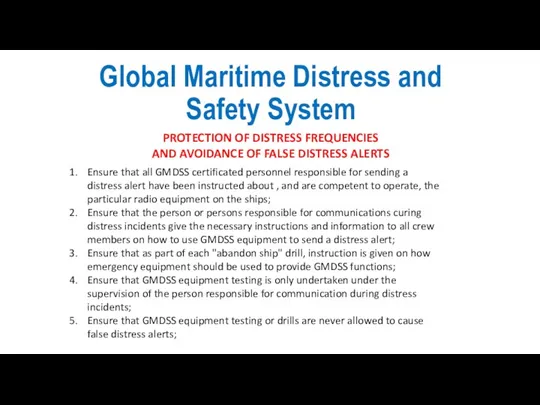
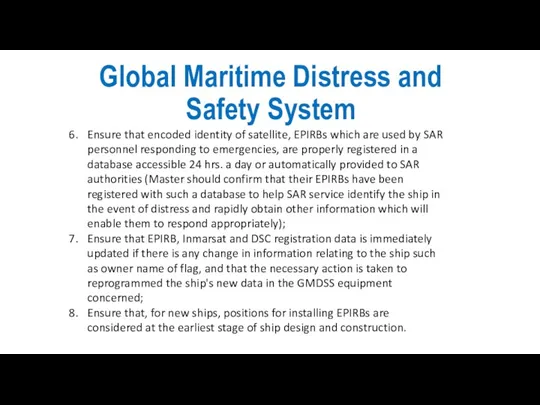

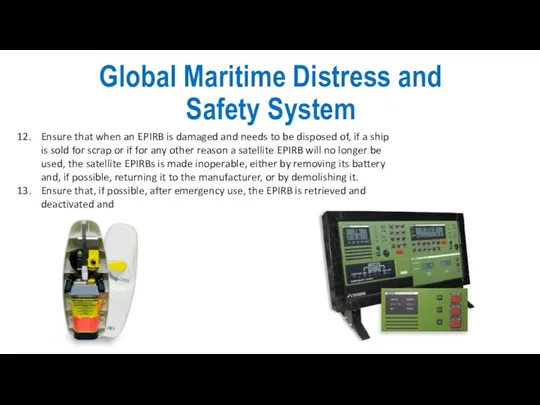
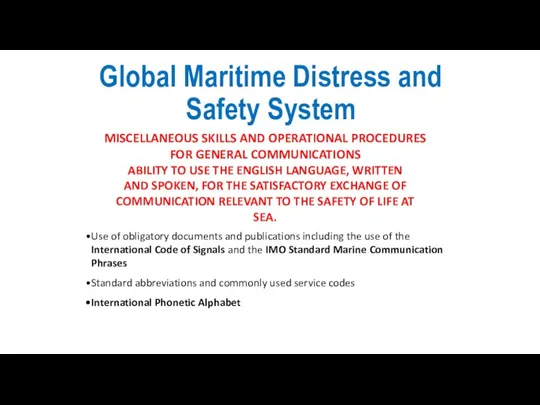
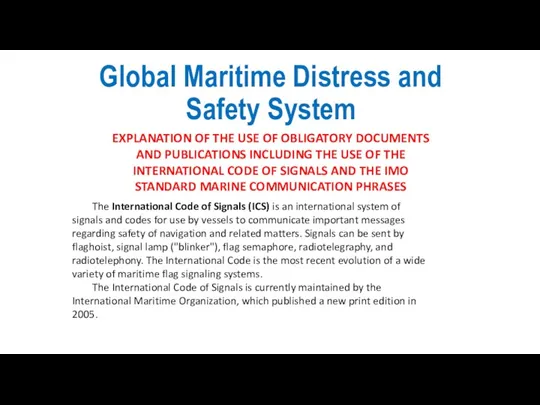
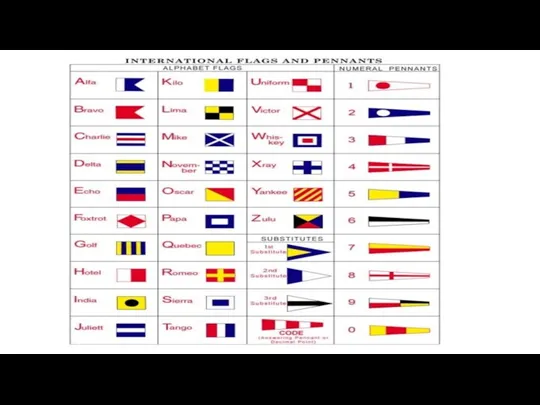
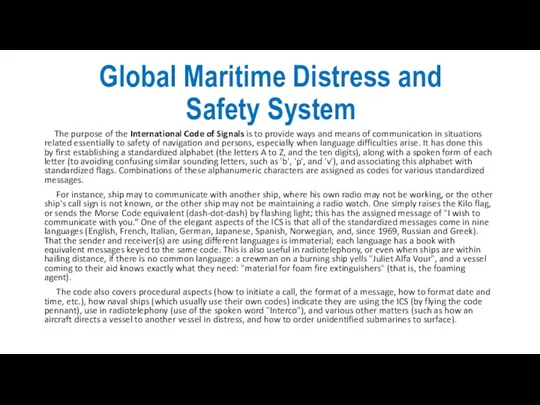
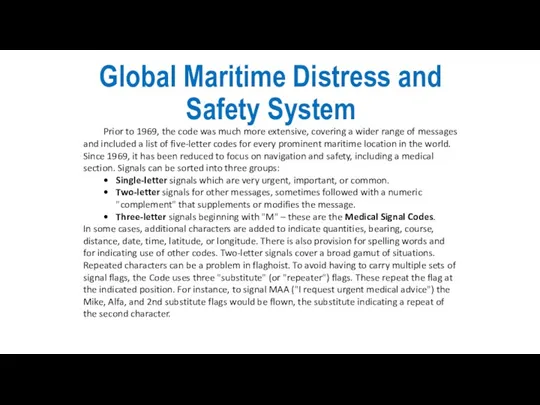
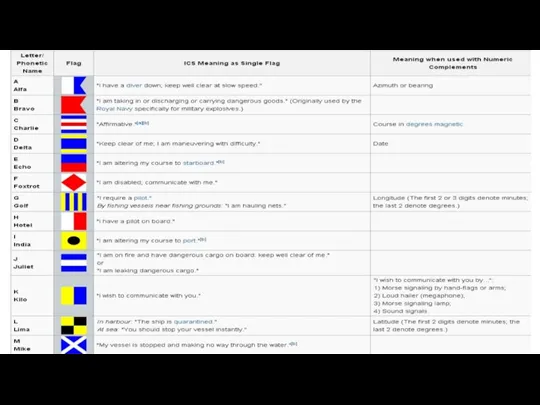
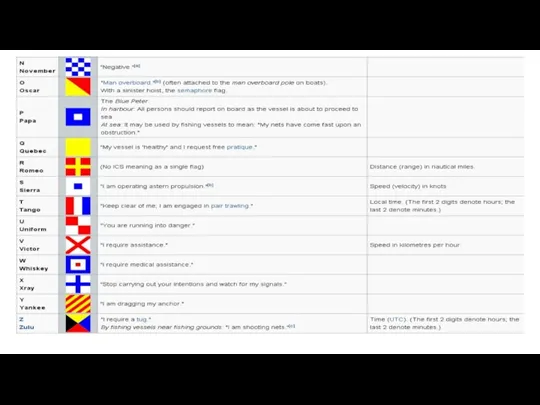
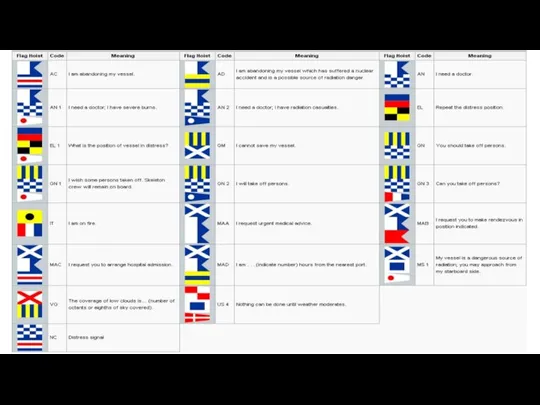
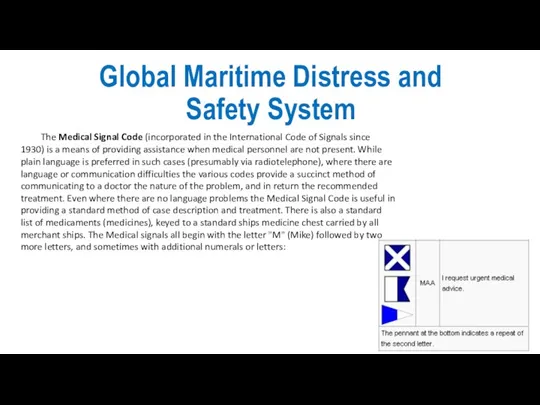
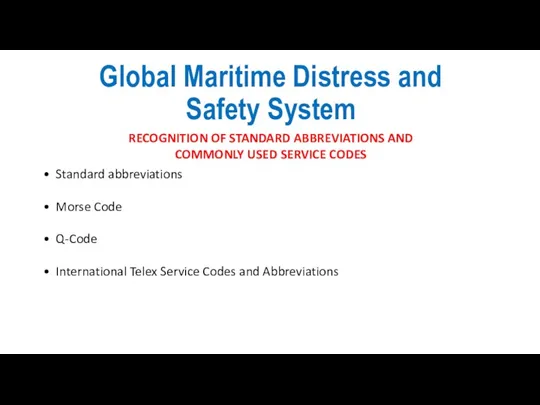
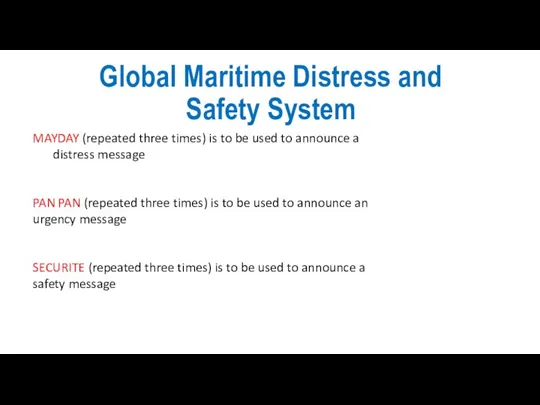
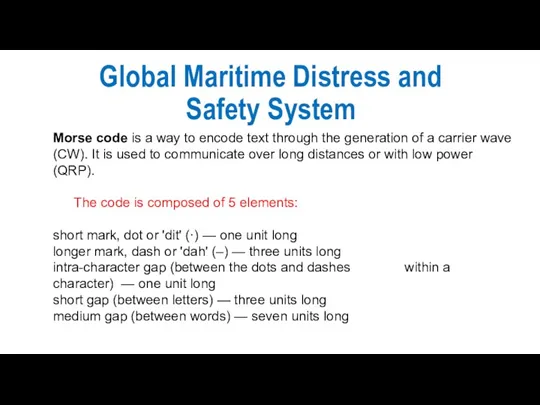
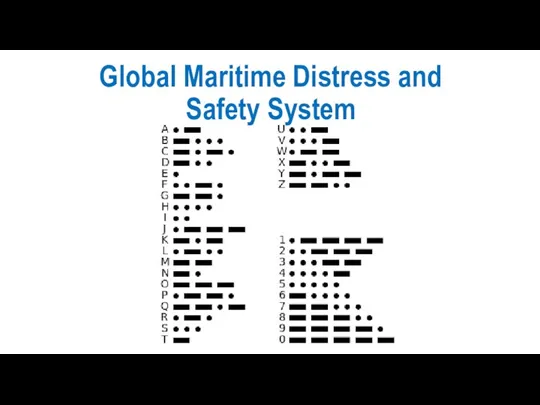
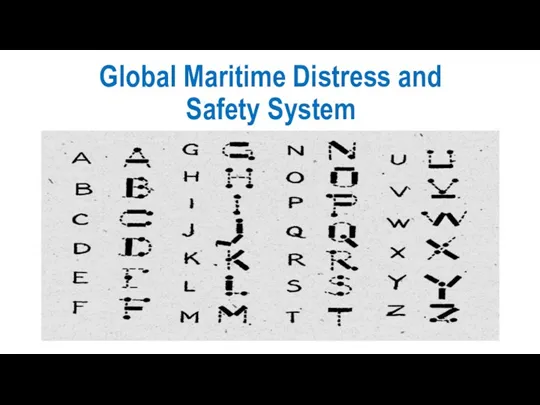
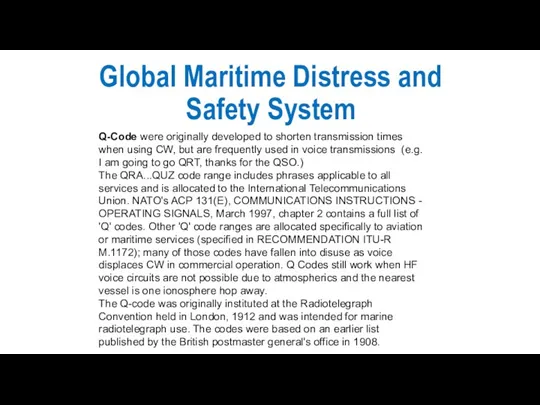
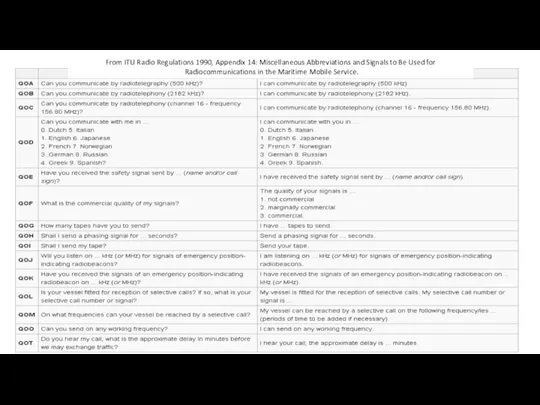
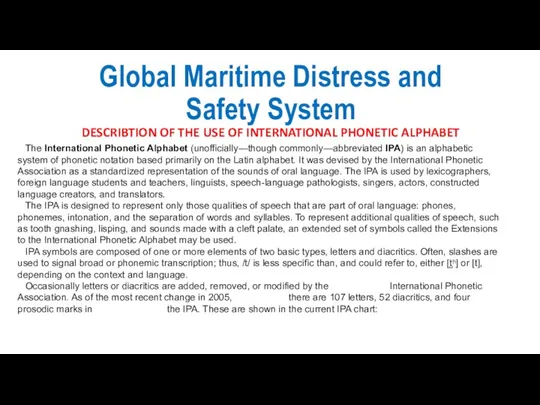
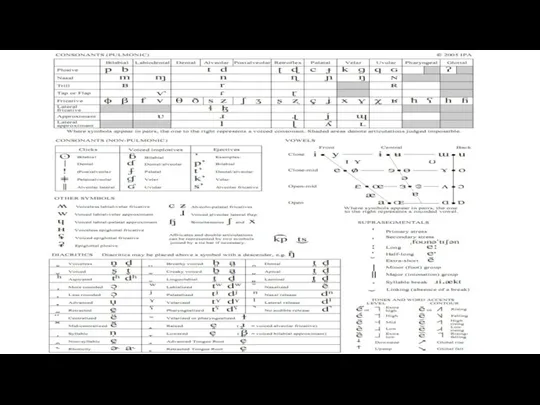
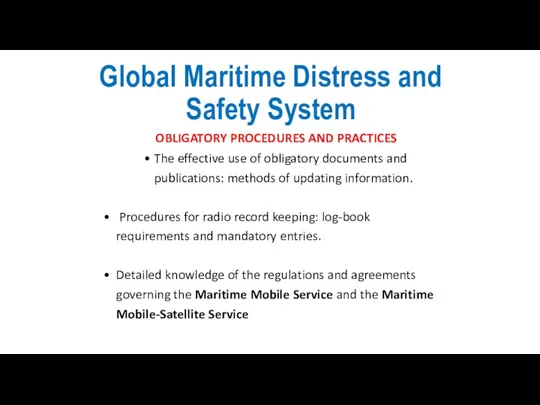

 Безопасный интернет
Безопасный интернет Проезд перекрестков
Проезд перекрестков Крупнейшие техногенные катастрофы XXI века
Крупнейшие техногенные катастрофы XXI века Навчання з питань охорони праці
Навчання з питань охорони праці Мобильный телефон. Польза или вред
Мобильный телефон. Польза или вред Школа дорожной науки
Школа дорожной науки Анализ детского дорожно-транспортного травматизма
Анализ детского дорожно-транспортного травматизма Основные положения работы персонала железной дороги зимой (модуль 2)
Основные положения работы персонала железной дороги зимой (модуль 2) Запрещающие знаки. Подготовка водителей транспортных средств категории С
Запрещающие знаки. Подготовка водителей транспортных средств категории С Организация переправ через горные реки. Организация биваков. Альпинистская подготовка. Тема 3.1
Организация переправ через горные реки. Организация биваков. Альпинистская подготовка. Тема 3.1 Ураганы
Ураганы Чрезвычайные ситуации техногенного характера
Чрезвычайные ситуации техногенного характера ПОЖАРНАЯ БЕЗОПАСНОСТЬ
ПОЖАРНАЯ БЕЗОПАСНОСТЬ Действия потерпевших в условиях автономного существования
Действия потерпевших в условиях автономного существования Взрывоопасные предметы. Кейс задание
Взрывоопасные предметы. Кейс задание ЗЕМЛЯТРЕСЕНИЕ. Трагедия в НЕФТЕГОРСКЕ
ЗЕМЛЯТРЕСЕНИЕ. Трагедия в НЕФТЕГОРСКЕ Чому ліси називають легенями планети
Чому ліси називають легенями планети Биологическое оружие
Биологическое оружие Квест-игра по правилам дорожного движения в подготовительной группе Путешествие по улицам города
Квест-игра по правилам дорожного движения в подготовительной группе Путешествие по улицам города Аппарат вредных привычек
Аппарат вредных привычек Основы гигиены питания
Основы гигиены питания Что изучае курс ОБЖ
Что изучае курс ОБЖ Убежища гражданской обороны
Убежища гражданской обороны Личная безопасность на улице и дома
Личная безопасность на улице и дома Надзвичайні ситуації природного характеру
Надзвичайні ситуації природного характеру Сигналы светофора и регулировщика
Сигналы светофора и регулировщика Презентация к уроку Гидродинамические аварии
Презентация к уроку Гидродинамические аварии Неделя профилактики употребления психоактивных веществ Независимое детство
Неделя профилактики употребления психоактивных веществ Независимое детство